International Tax | Transfer Pricing | Transfer Pricing Methods
What are the transfer pricing methods? Have you applied the correct transfer pricing method?
Transfer prices are the prices that a company sets when selling goods or providing services to another company within its multinational group, located in a different country. The purpose of the transfer pricing methods is to establish an arm’s length price that would be charged if the two companies were separate and not connected.
In determining the arm’s length price, the method looks at the functions each company does, the risks they take, and the assets used. Functions are design, manufacturing, assembling, research and development, servicing, purchasing, distribution, marketing, advertising, transportation, financing and management. Risks are market changes, investment losses, success or failure in research and development activities, financial uncertainties, and credit risks.
When selecting the appropriate transfer pricing method, a functional analysis must compare economically significant functions performed, assets utilised and risk assumed between related enterprises and independent enterprises. However, this can be difficult in practice, to achieve comparability of the products and services due to product differences especially for unique goods and services or unique markets.
The five transfer pricing methods that are acceptable under the OECD Guidelines and the UN Practical Manual are:
- Comparable uncontrolled price method
- Resale price method
- Cost Plus method
- Transactional net margin method
- Profits split method
The UN Practical Manual also recognises the sixth method which is the commodity rule. While the OECD guidelines allow taxpayers to adopt transfer pricing methods other than the OECD’s prescribed methods, the selected transfer pricing method must be appropriate.
Comparable uncontrolled price (CUP) method
The CUP method involves comparing prices with independent entities acting at arm’s length. Comparability factors used to determine the arm’s length price under the CUP method are quality, volume, level of market, geographic market, date, and intangible property.
The CUP method is the simplest form and most direct and reliable way of establishing arm’s length pricing and is considered the most preferred method by the OECD and courts applying the arm’s length principle. However, it often proves to be challenging in practice due to difficulties in obtaining comparable prices. Furthermore, a high level of comparability is required, as even minor differences in comparability factors may have a significant impact on the price.
Even though adjustments can be made for material differences in comparability between the products and services for volume discounts, payment terms, risks and minor product modifications, it is difficult to make accurate and reliable adjustments for the use of trademarks and other valuable intangibles, geographical market differences and major product differences.
In practice, the CUP method is often applied when an internal comparable is available and the transaction relates to commodities or other generic goods. In most cases, the internal comparable does not exist as most multinational entities deal internally within their group.
Cost-Plus Method (CPM)
The CPM uses a mark-up percentage on the costs incurred by the supplier of property or services for property transferred or services provided to another company within the same group. An appropriate cost plus markup is added to the cost in light of the functions performed and the market conditions.
The comparability of cost-plus method depends on functions performed such as research and development, manufacturing complexity, and inventory.
In practice, the CPM is often used in determining the pricing for:
- Long-term buying and selling agreements
- Semi-finished goods
- Routine manufacturing functions without significant IP such as toll or contract manufacturing
- Services of purchasing agents
- Contract Research and Development
The Cost-Plus Method focuses on the gross margin instead of the price, therefore it is less sensitive to product differences compared to the CUP method. Compensation for performing similar functions would tend to be equalised across different activities. However, the impact of any functional differences must still be examined, and appropriate adjustments should be made to account for differences in functions, assets and risks.
Applying the Cost-Plus Method can be challenging in practice because independent companies might not report gross margin information, and differences could arise from how expenses are classified in accounting. Furthermore, the cost basis can be affected by cost structures and internal cost allocations. The impact of poor management efficiency may also be included in the cost.
Resale Price Method (RPM)
The Release Price Method (RPM) starts by looking at how much a product, bought from a related company, is sold to an independent company. This resale price is then adjusted by an appropriate gross margin (called resale price margin). This margin covers the seller’s selling and other operational costs, taking into account the functions performed, the risks taken, and the assets used, in establishing an appropriate profit.
The comparability factors used in the resale price method are functions performed, risks assumed, and contractual terms (i.e. inventory levels, marketing services and market level). Adjustments are needed when there are differences in functions, assets and risks.
The resale price method focuses on the resale price margin, as such the RPM is less sensitive to product differences than the CUP method. However, functional differences may directly impact the resale price margin. For instance, if there are differences in accounting practices, it may be hard to compare gross profit margins. In such cases, an appropriate adjustment is required for comparability purposes.
RSM is a one-sided method, where the tested party is the reseller and it is often used in marketing operations and when the reseller does not add substantially to the value of the product. However, the RPM can be difficult to apply in practice due to a lack of reliable gross margin information from independent enterprises.
In practice, the RPM works well for determining prices when a company sells products to other related companies, and those companies then sell the products to independent parties without adding significant value to the products that it resells. This method is also appropriate when the material product differences make the CUP method is not suitable.
Transactional Net Margin Method (TNMM)
TNMM compares the net profit of a related enterprise in controlled transactions against sales, full costs, or assets. The chosen base for measuring TNMM must reflect the allocation of the functions, assets and risk between the parties to the transaction. For example, sales are a suitable base for transaction related to distribution activities, while full costs work is appropriate base for service or manufacturing activities. Return on assets or capital employed is suitable for activities that rely heavily on the use of capital.
TNMM aims to benchmark against net profitability instead of gross profit uplift factors, as in CPM and RPM. Since TNMM focuses on the net profit indicators, it is not affected by product differences (as in CUP) and functional differences (as in CPM and RPM). However, a comparability analysis is still necessary to determine whether transactions are sufficiently comparable.
When comparing sales, TNMM assesses the operating profit against sales. In practice, the net profit indicators used are earnings before interest and taxation to sales (EBIT/sales) for distribution activities and return on full costs for service and manufacturing activities.
For cost comparisons, TNMM examines net profit against net cost plus (or total cost mark-up). In practice, this is usually used in the case of service companies and toll manufacturers.
Return on Operation Assets (ROA) measures the profit against the operating assets. Operating assets exclude cash/cash equivalents, financial assets and deferred tax assets.
TNMM is the most commonly used method as comparable information at the net margin level is often readily available to the public and variations in accounting standards have less impact on the net profit level compared to the gross profit level. The TNMM is also less sensitive to product and functional differences. It relies primarily on comparability in functions, risks and assets. However, TNMM has limitations, as it does not consider factors like underutilisation of capacity, management inefficiency, cost structures, and business lifecycle. Adjustments are necessary for these comparability factors. TNMM does not account the overall profitability of the multinational enterprise (MNE) group, as such it may lead to disproportionate profits in one country relative to overall profits. Net margin can be influenced by factors that do not directly impact prices or gross margins.
Profit Split Method (PSM)
The Profit Split Method (PSM) is a transfer pricing approach aimed at dividing the overall profits of a multinational group among its different entities. This division is based on the relative value of the functions performed and contributions made by each entity in the value chain. The objective is to ensure that each company’s profits reflect the actual value of their contributions and the compensation they would receive in an arm’s length transaction.
Under the PSM, the combined profit of the associated enterprises is calculated at the operating profit level. The PSM uses the contribution analysis and the residual analysis. The contribution analysis examines the combined profit and divides the profit between the associated enterprises based on each party’s contribution to the transaction by reference to the relative value of their respective functions, assets and risks. External market data can be used to support how independent enterprises would distribute profits in similar conditions. If there is no comparable data, the profit split should be based on the relative value of the contributions by each of the associated enterprises to the transaction to achieve the arm’s length compensation.
When one party makes less complex, routine contributions, the residual analysis is the most appropriate method. It separates profits related to routine contributions from the profits attributed to unique and valuable contributions. Allocating the residual profit involves a functional analysis to be performed with respect to the value of assets or R & D costs so that the economic contribution of each group can be calculated.
The strengths of the PSM are that it does not rely directly on closely comparable transactions, and it is less likely to cause either party to transactions in an extreme or improbably profit result. In practice, this method is used when transactions are closely connected and cannot be looked at separately. It is also used when both parties to a transaction contribute valuable intangible assets. However, it can be challenging to use in practice because it needs detailed information to be reliable. Also, measuring the revenue and costs for all associated enterprises may require the accounts to be prepared on a common basis and adjustments for differences in accounting practices and currencies might be necessary. Allocating costs between related companies in complex and interconnected transactions can be challenging and may require a thorough understanding of the economic contributions of each entity.
The Commodity Rule
The commodity rule utilises the quoted prices of the commodities to establish the arm’s length price for import and export transactions involving commodities like grains, oil and oilseeds, oil and gas, mining and fishing. The commodity rule is straightforward and offers a relative certainty, and is similar to the CUP method.
However, this method has its limitations. It may produce inaccurate results as it ignores the economic circumstances of the actual transaction. There is also a risk that the method may not be recognised by the tax authorities in the country of the associated enterprise at the other end of the transaction. This lack of recognition could pose challenges in defending the transfer pricing methodology during audits. Furthermore, this method may cause an overcompensation of one associated enterprise at the expense of another, potentially leading to issues of fairness and equity in the distribution of profits. Finally, this rule may potentially cause double taxation as tax authorities in both countries may adjust transfer prices, impacting both ends of the transaction.
Interestingly, developing countries, especially in Latin America and Africa, recognise and adopt the commodity rule for transfer pricing purposes.
At Ezzura Tax Advisory, our international tax specialist has the expertise and experience to guide you seamlessly through the intricacies of Transfer Pricing Rules and Australian Simplified Transfer Pricing Record-Keeping Options. We can review and help to ensure that you have complied with the Australian transfer pricing rules and identify the potential risks of transfer pricing adjustments. Trust us to simplify the complexities of global taxation, creating a tax-effective strategy that gives you confidence and peace of mind for your worldwide ventures.
This document is provided for general informational purposes only and does not constitute specific tax advice. The information contained herein is not tailored to your individual circumstances, and we strongly recommend that you seek professional advice from a qualified tax advisor before making any decisions based on the content of this document. Any reliance on the general information provided is at your own risk, and Ezzura Tax Advisory expressly disclaims any responsibility or liability for actions taken or not taken based on this information.





